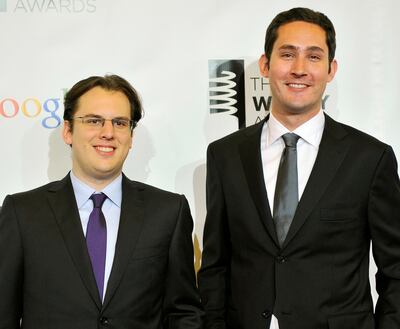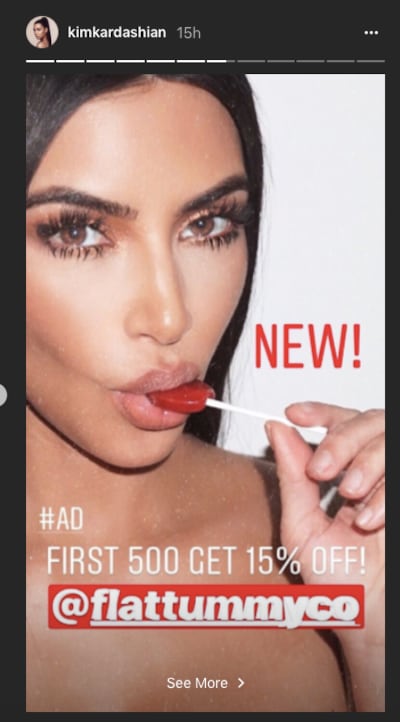On Monday, Instagram's founders Kevin Systrom and Mike Krieger announced their departure from the company they started eight years ago and sold to Facebook for $1 billion (Dh3.6 bn) two years later.
When Facebook bought Instagram, the photo-sharing app had around 50 million global users. It now has 600m. That's a smashing success, so why are the pair moving on? Bloomberg has reported growing tensions over the way Facebook is changing the app, while the official line from Systrom, 34, and Krieger, 32, is that they want to "explore curiosity and creativity again". They leave just a few months after the exit of Jan Koum, the co-founder of WhatsApp, which was bought by Facebook in 2014.
It’s hard to believe that Instagram began less than a decade ago: it’s just an app, yes, but it’s also a strange, all-consuming, society-changing space. If you’re a millennial or younger and have the means to own a smartphone, you may not have Facebook (their teen audience is dwindling), but you’re almost certainly on Insta.
The time-sucking app is like flipping through a glossy magazine, one thumb swipe at a time: aspirational, beautiful, but also sometimes deflating. Everyone’s lives seem more glamorous and less of a grind through the filters. Sure, you can take control of your own feed and only follow the people who don’t make you feel terrible about every glamorous holiday you’ve never been on or every burpee you’ve never done. But, with an algorithm-driven system and the human compulsion to watch on in envy, it can be hard to truly control your own Insta destiny.
When Systrom and Krieger accepted Dh3.67 bn from Facebook for their app, they can’t claim to have been doing anything other than opening the door to an entirely different corporate beast. With the addition of sponsored posts and the rise of influencers, are Zuckerberg and Facebook’s executives to blame for the fact Instagram sometimes feels like a digital-era, pocket-sized version of a home shopping TV channel? The platform being a far more commercial place today may just be the natural life cycle of anything that lives and thrives in our hyper-capitalist space, but Facebook certainly made changes to benefit advertisers as soon as it became boss.
Instagram was at first called Burbn, and was all about checking into locations – photos were an afterthought. But, after Systrom’s now-wife said that she wouldn’t post her photos on Burbn because she wasn’t a good enough photographer, he realised there was a gap in the app market. And that’s when Instagram became about filters to add sheen and nostalgia to smartphone snaps, with ease too. “We realised we needed to make people feel like their photos are worthy of sharing,” Systrom told National Public Radio’s Guy Raz of the breakthrough.
After the pivot to photography, Instagram exploded, going from no users to a million in just two months from October to December 2010. Clearly, the ability to make our lives look picture perfect was something many people craved. In 2010, Instagram was a different place than it is today; it was full of Polaroid-style, retro filters that seemed to hark back to the days before digital cameras.
Today, sepia tones have been usurped by the saturation tool, which splashes vivid turquoise into oceans and paints hills in a verdant green rarely spied in nature. Traditional photography seems to have picked up tips from the app itself, with photo sites like Getty Images releasing “Insta-style” filtered images from events like fashion weeks and award shows. It seems we all want more vibrance, flatlay food and photos of people staring out at skylines from infinity pools.
So, as they leave their creation in the hands of Zuckerberg, what will the duo do next? “Building new things requires that we step back, understand what inspires us and match that with what the world needs; that’s what we plan to do,” the pair said in a statement.
They were definitely onto something eight years ago when they gave us the tools to easily mimic professional photography, but they also opened up a portal that has perhaps exacerbated mental health issues in young people – a 2017 Status of Mind survey found that teens associate the app with anxiety, depression and bullying more than any other social media tool. They also birthed a plethora of influencers who make quick money selling things, often without giving any thought to advertising standards or the veracity of their claims. A report from Mediakix in 2017 found that, over a period of a month, 93 per cent of paid posts from the 50 most followed celebrities were not clearly labelled as ads on the platform. Perhaps the pair’s next move will be to create a new space that presents reality with more grit, less gloss?
How Instagram has changed since Facebook became boss
- One of the first moves was hidden in the fine print: in December 2012, the new owners updated the app’s terms of service so that the company could sell users’ photos to third parties without permission or any compensation.
- In November 2013, it introduced sponsored posts for advertisers in the United States (this went global in September 2015). In August 2014, more analytics tools were built for advertisers, and in September 2015, it allowed advertisers to post 30 second videos (users could only post 15 second clips).
- In December 2013, it launched Direct, meaning users could send posts and photos directly and privately to other users – the app’s first bid at competing with Snapchat’s messaging service.
- In June 2014, the photo editing became more sophisticated so that users could change brightness, highlights, shadows, just as you would with professional software. Filters are still a thing, but Instagram’s beautification of photos is now far more bespoke.
- In October 2015, Boomerang was launched – which uses five photos taken in a one-second burst to create a silent video that then plays in reverse.
- In March 2016, the photo feed went from chronological to algorithm-driven. For many, it just felt like a move to give advertisers more play, with control of their feed being taken out of their hands.
- Arguably the most successful (and most Snapchat-derivative) update was in August 2016 when the app introduced Instagram stories. While feed posts are often polished and curated, the videos and photos on story slideshows disappear after 24 hours, the ephemeral nature meaning they tend to be less picture perfect. Another change in this month was the addition of Image Zoom, so you could really analyse the details of a photo by pinching your screen.
- In October 2016, the first Instagram-for-desktop app was launched, so that people could while away time scrolling through photos on larger screens as well. A month later, Instagram Live was launched, but unlike Facebook, these broadcasts disappear once a user stops streaming.
- In February 2017, slideshows were introduced, so that users could add multiple pictures to one post, like a gallery.
- This year so far, there have been two major changes: in May a feature was added so you could “mute” certain users from your feed without potentially causing offence by unfollowing. And in June, IGTV was launched, a new video streaming service with videos from 10 minutes to one hour that looks set to take on YouTube.
_________________
Read more:
Kuwaitis call Sondos Al Qattan's video an 'embarrassment'
Edie Sedgwick: the original 'It girl'
Thanks to social media, the pandemics of the future could be psychological
_________________



